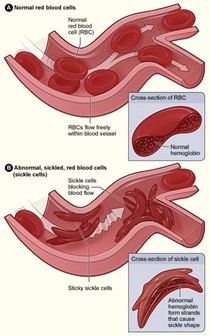A nurse in a long-term care facility has received change-of-shift report about four clients. Which of the following clients should the nurse attend to first?
A client who has heart failure and is incontinent of urine
A client who has COPD and dementia and was agitated during the night shift
A client who had a hip arthroplasty 10 days ago and reports pain with ambulation
A client who had a cerebrovascular accident 6 months ago and reports constipation
The Correct Answer is B
The nurse should atend to the client who has COPD and dementia and was agitated during the night shift first. This client may be experiencing respiratory distress or other complications related to their COPD and requires immediate assessment and intervention.
a) A client who has heart failure and is incontinent of urine requires atention, but their needs are not as urgent as those of the client with COPD and agitation.
c) A client who had a hip arthroplasty 10 days ago and reports pain with ambulation requires atention, but their needs are not as urgent as those of the client with COPD and agitation.
d) A client who had a cerebrovascular accident 6 months ago and reports constipation requires attention, but their needs are not as urgent as those of the client with COPD and agitation.

Nursing Test Bank
Naxlex Comprehensive Predictor Exams
Related Questions
Correct Answer is B
Explanation
b. Perform passive range-of-motion exercises.
During a vaso-occlusive crisis in sickle-cell disease, blood flow to certain areas of the body may be restricted, leading to pain and tissue damage. Passive range-of-motion exercises can help promote blood circulation and prevent joint stiffness and further complications. These exercises involve gently moving the child's joints through their full range of motion without active participation from the child.
Explanation for the other options:
a. Limit fluid intake during the evening: Fluid intake is important in sickle-cell disease to prevent dehydration and maintain adequate blood flow. Restricting fluid intake during a vaso-occlusive crisis can further contribute to dehydration and may worsen the crisis. It is important to encourage fluid intake unless otherwise instructed by the healthcare provider.
c. Apply cold compresses to painful areas: Cold compresses are not recommended during a vaso-occlusive crisis in sickle-cell disease. Cold temperatures can cause vasoconstriction and further worsen the blood flow to affected areas, leading to increased pain and tissue damage. Warm compresses or warm packs may be used to promote vasodilation and provide pain relief.
d. Provide a low-protein diet: A low-protein diet is not specifically indicated in the plan of care for a vaso- occlusive crisis in sickle-cell disease. Adequate protein intake is important for overall nutritional needs and tissue repair. The focus of nutritional management in sickle-cell disease is usually on a well-balanced diet that includes adequate hydration and appropriate nutrient intake.
In summary, performing passive range-of-motion exercises is an appropriate intervention to include in the
plan of care for a school-age child experiencing a vaso-occlusive crisis in sickle-cell disease.

Correct Answer is D
No explanation
Whether you are a student looking to ace your exams or a practicing nurse seeking to enhance your expertise , our nursing education contents will empower you with the confidence and competence to make a difference in the lives of patients and become a respected leader in the healthcare field.
Visit Naxlex, invest in your future and unlock endless possibilities with our unparalleled nursing education contents today
Report Wrong Answer on the Current Question
Do you disagree with the answer? If yes, what is your expected answer? Explain.
Kindly be descriptive with the issue you are facing.
